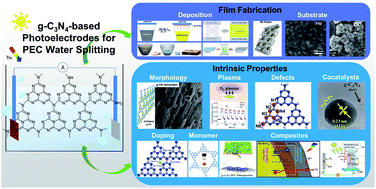g-C3N4-based photoelectrodes for photoelectrochemical water splitting: a review
Abstract
Converting intermittent energies into green and storable chemical fuels (like hydrogen) is of great importance to address the global energy crisis and environmental issues. Photoelectrochemical (PEC) water splitting is a promising technology designed for this purpose, but its wide application relies significantly on the exploration of both economic and efficient electrode materials. g-C3N4 is a metal-free, low-cost and visible-light responsive semiconductor that shows great potential as a photoelectrode material for PEC water splitting. However, due to the inherent disadvantages of g-C3N4 and the difficulty in fabricating homogeneous and concrete g-C3N4 films, its PEC performance has encountered a bottleneck. For further attention on and breakthroughs in the development of g-C3N4-based photoelectrodes, this review commences with the basic principle of PEC water splitting. Then, recent progress in the strategies for improving the properties of g-C3N4 and the quality of g-C3N4 film electrodes is critically discussed, following the introduction of the basic structure of g-C3N4 as well as its advantages and challenges for PEC applications. Furthermore, current challenges in and future perspectives on obtaining g-C3N4-based electrodes for highly efficient and stable PEC water splitting are presented finally.



 Please wait while we load your content...
Please wait while we load your content...